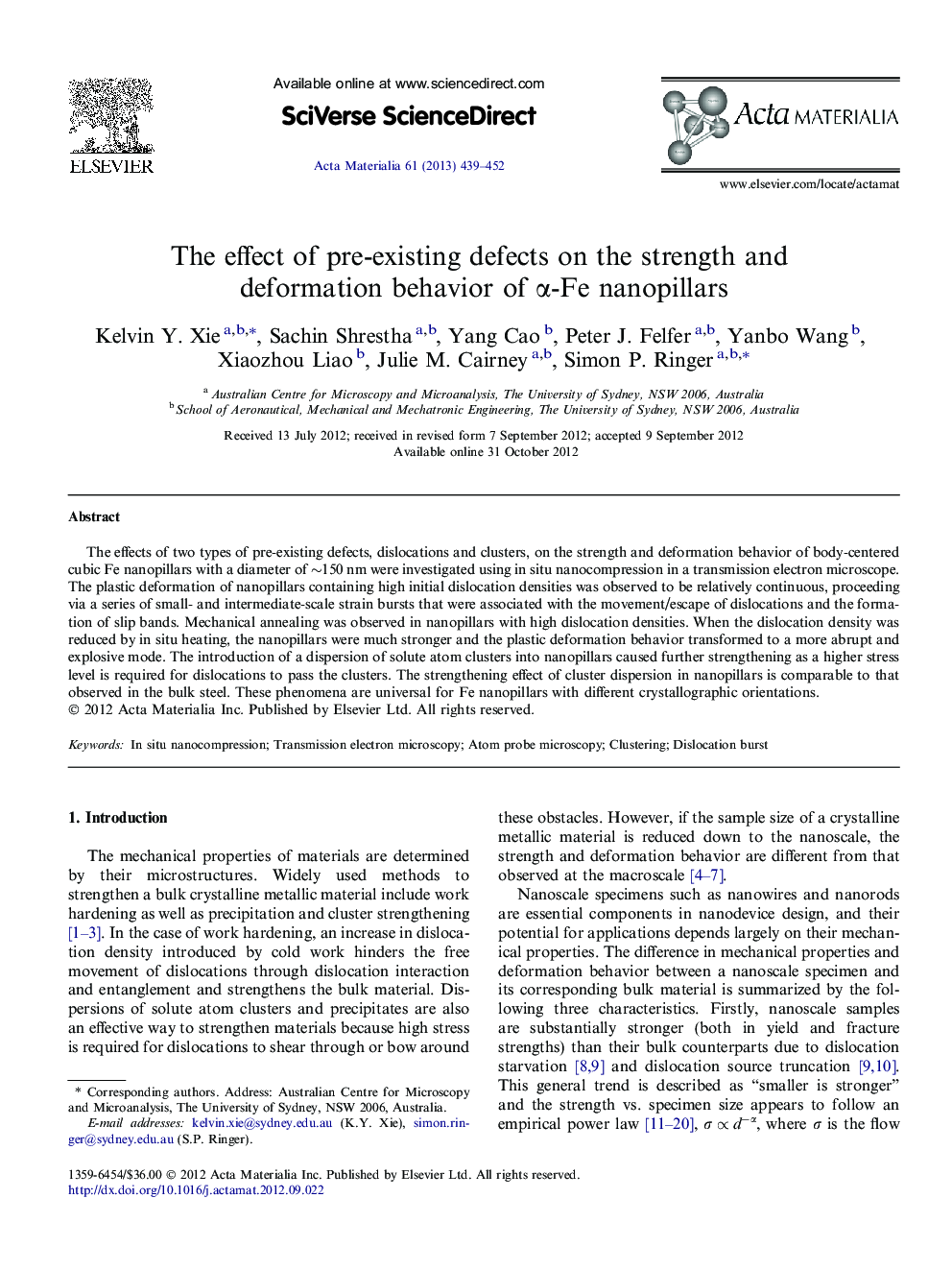| Article ID | Journal | Published Year | Pages | File Type |
|---|---|---|---|---|
| 1446220 | Acta Materialia | 2013 | 14 Pages |
The effects of two types of pre-existing defects, dislocations and clusters, on the strength and deformation behavior of body-centered cubic Fe nanopillars with a diameter of ∼150 nm were investigated using in situ nanocompression in a transmission electron microscope. The plastic deformation of nanopillars containing high initial dislocation densities was observed to be relatively continuous, proceeding via a series of small- and intermediate-scale strain bursts that were associated with the movement/escape of dislocations and the formation of slip bands. Mechanical annealing was observed in nanopillars with high dislocation densities. When the dislocation density was reduced by in situ heating, the nanopillars were much stronger and the plastic deformation behavior transformed to a more abrupt and explosive mode. The introduction of a dispersion of solute atom clusters into nanopillars caused further strengthening as a higher stress level is required for dislocations to pass the clusters. The strengthening effect of cluster dispersion in nanopillars is comparable to that observed in the bulk steel. These phenomena are universal for Fe nanopillars with different crystallographic orientations.
